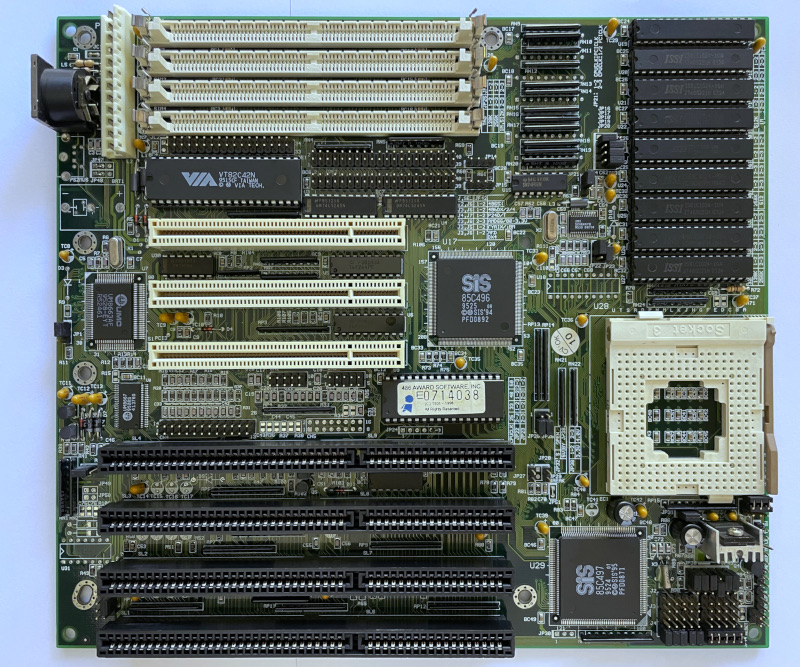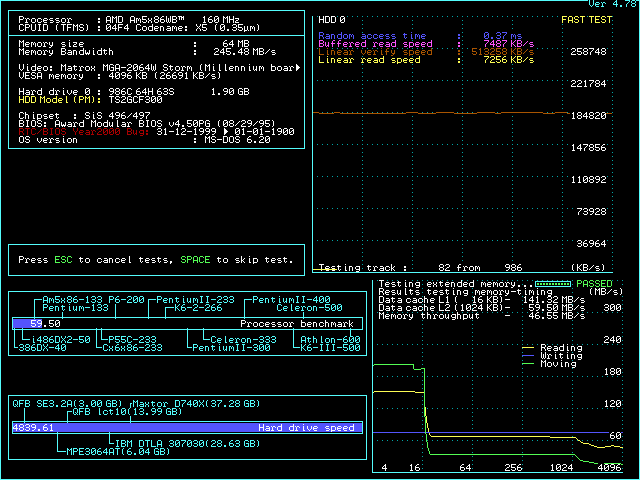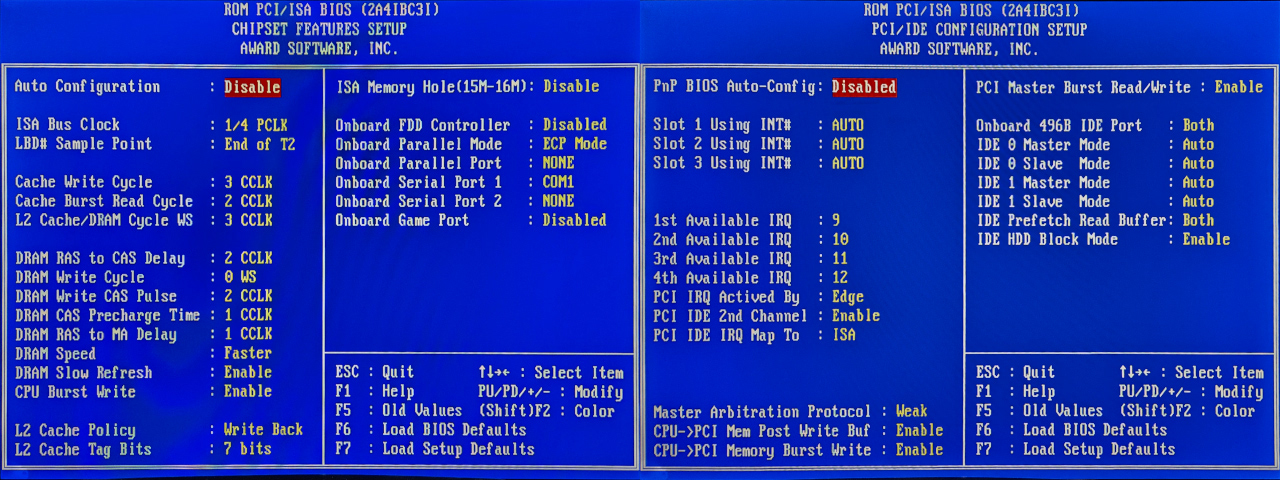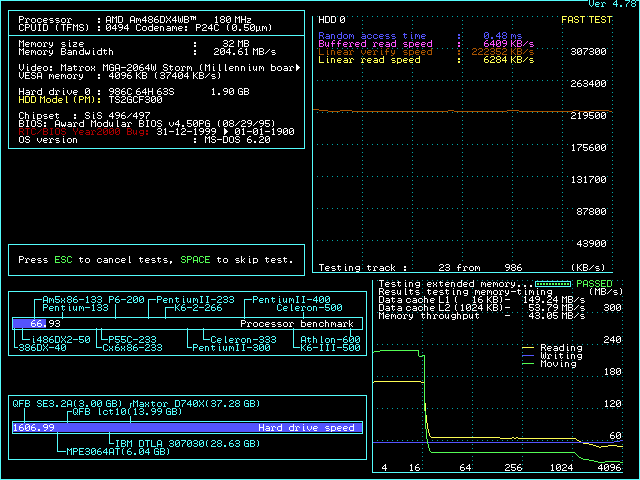Reply 1600 of 2374, by pshipkov
Chaintech 486SPM M104 (seems to be the latest revision), based on SiS 85C496, 85C497.
In crisp condition. Really well preserved.

Feels like slightly early design compared to the very late 486 motherboards.
No support for EDO RAM.
No 3.45V to CPU option.
Very easy to setup jumpers. Very nice.
There is not much more to add - very straightforward assembly.
Test setup:
Matrox Millenium PCI 4Mb
1Mb level 2 cache, 10ns rated chips
32Mb or 64Mb 60ns FPM RAM
CF adapter and card connected to the onboard IDE
--- Am5x86 at 160MHz (4x40)
All BIOS settings on max.
PnP BIOS auto-config can hang the system during POST. Requires BIOS reset to resolve it.
Turning that parameter off resolves the problem entirely.
SpeedSys:

Not the fastest motherboard, but not bad either.
--- Am5x86 at 180MHz (3x60)
There are no clock generator jumpers for 60/66MHz, but this simple mod unlocks these frequencies.
Different tests pass with arbitrary tighter BIOS settings and performance is really good, but had to slow things down for a fully stable system:
CACHE WRITE CYCLE = 3 CCLK (best is 2)
CACHE BURST READ CYCLE = 2 CCLK (best is 1)
DRAM WRITE CAS PULSE = 2 CCLK (best is 1)
DRAM SPEED = FASTER (best is FASTEST)
ISA BUS CLOCK = 1/4 PCLK (best is 1/3), the 1/3 option works, but not every key stroke is captured and processed, which is annoying

Speedsys numbers look nice.

All 180MHz metrics will be combined soon into a single chart, so for now posting the test results in a textual form only:
Wolf3D: 141.5 fpsPC Player: 29.8 fpsDoom: 69.7 fpsQuake 1: 19.9 fpsWinTune 2: 15552 KPixels/sec3D Studio R3: 103 sec (1:43)LightWave3D 4: 1099 sec (18:19)
Numbers are below what PC-Chips M919 with 1Mb L2 cache module shows (which is currently the best option in this category), but still - the fact that 3x60 is a viable for this motherboard is great by itself.
With smaller level 2 cache size tighter BIOS timings will most likely be possible. Something i may explore later. For now will stick to the maximum L2 cache buffer.
--- Am5x86 at 200MHz (3x66)
The system hangs during POST no matter what.
--- Am5x86 at 200MHz (4x50)
POST completes but always hangs during BOOT to DOS.
It is related to the level 2 cache. If turned-off or chips not present - all is good.
Tried hard to overcome the issue but without success.
--- Intel Pentium Overdrive P24T (POD100) at 100MHz
All BIOS settings on max.
No jumper changes required between Am5x86 and POD100 CPUs, which is pretty nice.
Either the motherboard supplies 5V to CPU by itself, or POD100 works fine at 3.3V on this board.
Updated the POD100 comprehensive summary post with the related information for this motherboard.
The short summary:
Intermediate performance in interactive DOS graphics.
Number 3 in Quake 1, number 2 in Windows GUI and one of the top 3 in complex offline computing.
Quite satisfying.
---
The SPM model is a clear upgrade over the previous SOM model which does not handle POD processors and shows overall lower performance metrics.
Also, very easy to work with system.
Simple mod by Feipoa to enable 60/66MHz here.